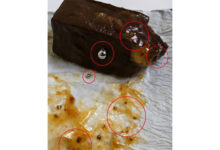The Hidden Purpose Behind That Little Dent on Your Milk Jug, And Why It Matters More Than You Think
Most people don’t think twice about the small, round dent on the side of a plastic milk jug. It’s easy to dismiss it as a flaw or random quirk in the manufacturing process. But this subtle indentation is actually a clever and intentional piece of design that serves multiple important purposes—ranging from safety and durability to sustainability and practicality. It’s a perfect example of how even the most ordinary objects are often the result of smart engineering.
One of the dent’s key roles is to act as a pressure control system. Milk jugs are typically made from high-density polyethylene (HDPE), a lightweight and cost-effective plastic. Because these containers are thin to save material and weight, they’re vulnerable to pressure buildup. The dent functions as a flexible zone, allowing the jug to expand and contract with temperature changes or movement without bursting or leaking. Just like an expansion joint in a bridge, this flex area absorbs the shifting forces inside the jug and maintains structural integrity. That slight pop you hear or feel when setting down the jug? That’s the dent doing its job.
The dent also acts as a built-in shock absorber. Jugs get dropped, tipped, or jostled regularly—from grocery store shelves to kitchen counters. Without the dent, impact from falls could easily crack the plastic. Much like a crumple zone in a car, the dent absorbs energy and reduces the risk of messy leaks.
Beyond safety, this design is a quiet win for sustainability. By reinforcing the jug with this small feature, manufacturers can use less plastic overall. Thinner walls become viable because the dent provides extra strength where it’s needed most. This not only saves material but also reduces the carbon footprint of production and transport. Lightweight jugs mean more can be shipped per load, cutting fuel use and emissions. It’s a small design tweak that supports larger environmental goals.
Even after the milk is gone, the dent continues to be useful. It acts as a weak spot that helps consumers easily crush the jug for disposal or recycling, reducing its volume and making processing more efficient. Some brands even incorporate embossed logos or measurement lines into the dented area, merging form with function.
Ultimately, that little dent is a symbol of the thought and engineering behind everyday items we often take for granted. Just like the tiny pocket in a pair of jeans or the hole in a pen cap, it’s a subtle yet powerful feature born from practical need. The next time you grab a jug of milk, take a second to appreciate that humble dent. It’s a quiet workhorse—protecting, saving, and supporting—without anyone ever really noticing.

